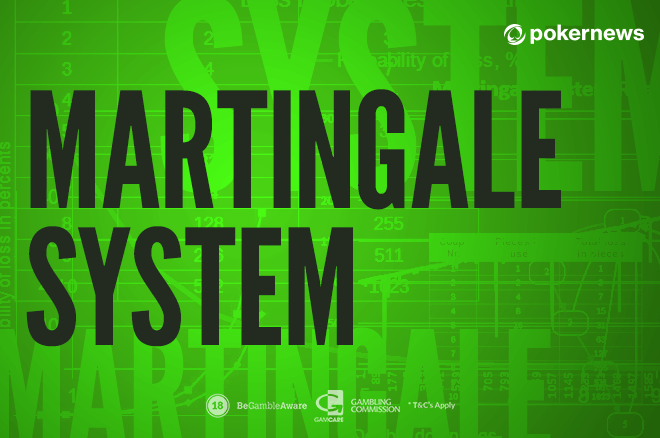Introduction
Ask any gambler that’s read a few of gambling strategy guides which betting method is best for ensuring a profit and they’ll point to the Martingale System. If you ask the same question to a seasoned gambler with years of experience in the field, they’ll usually say anything other than the Martingale System.
Below I focus more on the casino gambling of Blackjack and Roulette to demonstrate why it doesn’t work in the long run, but the exact same principles apply to Sports Betting. You are taking a somewhat 50/50 bet (win/loss, over/under) and increasing your bet when you lose.
Among the canon of gambling literature in the world, there are few issues that are more widely debated than the Martingale System. Originally developed in France back in the 18th Century, this style of betting is designed for games with a heads or tails format. While it can be directly applied to a simple game of guessing heads or tails, it can also be adapted for use in casino games which follow a similar betting pattern (i.e. the returns are 50/50) such as blackjack and roulette.
To expand on this further, here’s a detailed look at how the Martingale System works in a casino setting, first in a game of blackjack and then at the roulette wheel.
Martingale in Action: Blackjack
At its core, the Martingale system requires you to double your previous stake for every losing bet you make. For example, let’s assume your first bet at the blackjack table is $5 and you lose the hand. At this point your next bet would need to be $10.
This sequence basically continues until you win a hand, so if your second bet loses, you’d need to stake $20 on the third hand and so on and so on. Essentially, this strategy forces you to constantly double your wager each time you lose with the prospect that when you eventually win a hand.
Once you do win a hand the mathematics of the system dictate that you’ll show a profit of one unit. In basic terms, a single unit is defined as the size of your starting stake. So, in this example, after losing three hands in a row, the player would need to stake $40 on their fourth hand, taking their overall exposure to $75. After winning this hand the player receive $80 which would leave them with a $5 profit.
Martingale in Action: Roulette
In a similar way to blackjack, if you lose a spin after you’ve placed a bet then you double your ante on the following turn of the wheel. To ensure the Martingale System can be properly implemented at the roulette table, the player will need to limit their bets to red or black (basically 50/50 propositions).
For example, the player bets $10 on red and loses their first spin. They then have to bet $20 on the next spin. At this point he loses again and is forced to bet $40 on their third spin. On this spin they manage to choose the correct colour and receive a payout of $80.
A one unit profit will be the result of this process and once the player has one a bet they need to reset and start the betting sequence again from their original stake.
Surely Martingale Works, Right? Wrong
While the Martingale System seems like a fantastic way to make money playing blackjack or roulette, it’s not a solution to all your gaming problems. In pure mathematical terms the system is bulletproof, however, in the reality of the gaming world it’s full of problems. The main issue with Martingale is that it requires an extremely large bankroll.
To illustrate this, consider our pervious example where $10 was the opening wager. In this situation you’d need to bet $640 as your opening stake after just six losing hands. This is obviously far beyond the finances of many players and the main reason why this betting strategy doesn’t really work in reality.
OK, so what if you have an unlimited bankroll? In this situation the Martingale System would certainly work; however, it’s at this point the casino’s rules will cause this strategy to fail. Every live and online casino will have a maximum betting limit and this makes it impossible to correctly implement the Martingale system. Just because you can afford to constantly double your bet until you hit a winner, a table’s betting limits will prevent you from doing this repeatedly and this is what kills your EV (expectation).
Using Martingale Comes at a Cost
The Martingale Betting System can only succeed when its main principle is upheld: i.e. you must continue to double your bets until you win. If this pattern is interrupted at any point or limited by external factors, it falls down in both theory and practice. Therefore, if you’re looking for bigger blackjack or roulette profits, then you should look beyond this strategy. Although there is some merit to it if used in small doses, to rely on it as a complete betting system would be a costly mistake and one that would break any bankroll management rules you may have set for yourself.
Instead of using gimmicks and systems, I recommend learning proper casino game play.
